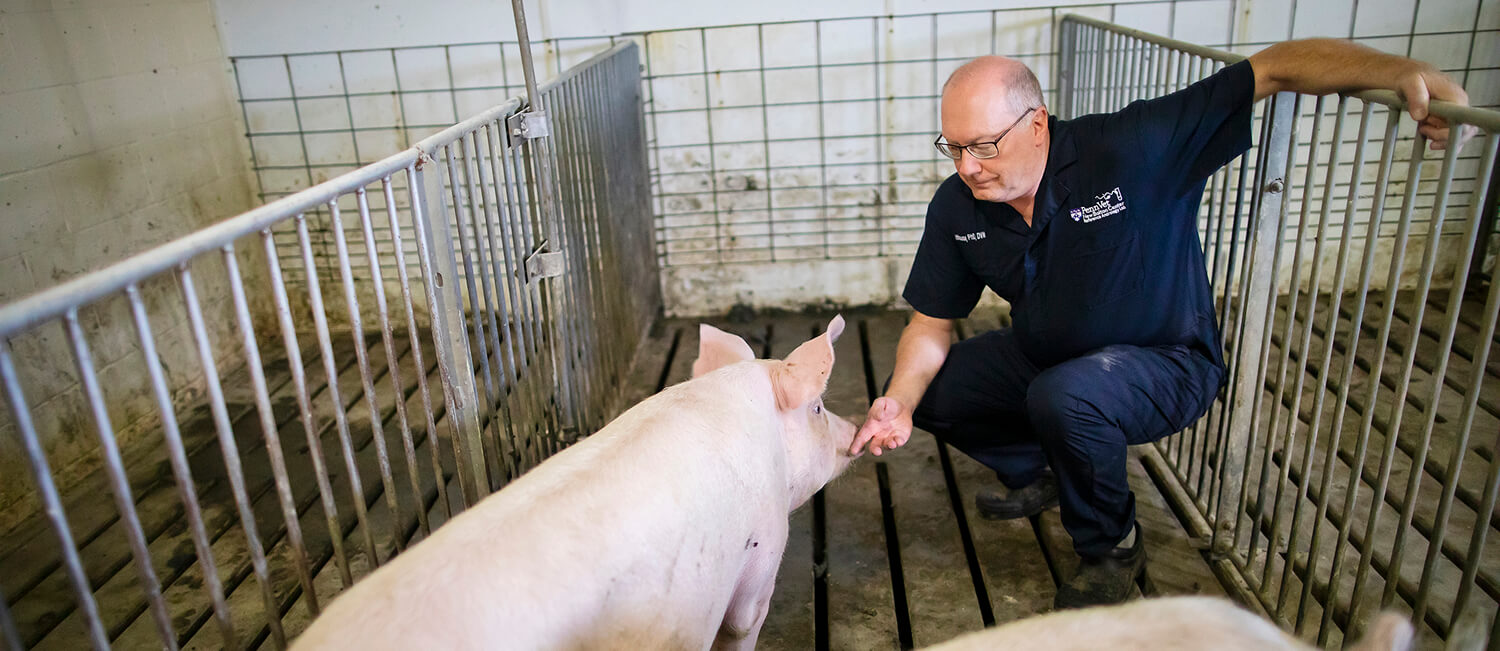 “We are part of a system that is essential to supporting the food supply chain," said Dr. Gary Althouse, Penn Vet Associate Dean of
“We are part of a system that is essential to supporting the food supply chain," said Dr. Gary Althouse, Penn Vet Associate Dean of
Sustainable Agricultural and Veterinary Practices.
Caring for a cow with uterine prolapse requires teamwork. The physicality and teamwork it demands — one person to position the animal, another to supply tools and equipment, sometimes a third to assist — makes it nearly impossible to do while social distancing. At the beginning of the pandemic, large animal veterinarians had a tough choice: maintain strict social distances or work as safely as possible with dairy and beef farmers to help their cows.
“From the get-go we knew on the food animal side that we would have to continue to interact daily with our clients,” said Dr. Billy Smith, Associate Professor of Field Medicine. He and his colleagues on New Bolton’s Center Field Services team serve a clientele that includes regional farmers. “They rely heavily on our input and our work to maintain normal food production. We must continue to be a part of their businesses.”
As human health care workers put their well-being at risk to care for COVID-19 patients, veterinarians have also put themselves out there to ensure animals remain in good health.
From One End to the Other
For large animal veterinarians at New Bolton Center, particularly those looking after food animals like cattle and pigs, maintaining a regular workflow during the COVID-19 crisis has been essential to sustaining the food supply chain.
Throughout the pandemic, their caregiving has been supported by Penn Vet scientists performing vital diagnostics and monitoring to identify diseases and other disruptive impacts on animals across Pennsylvania. And other Penn Vet faculty have been exploring the consumer side and how perceptions of food security are shifting in a world changed by the novel coronavirus.
“COVID-19 emerged from animals, which underscores the importance of veterinary health in protecting not only animal health, but also human health and well-being,” said Dr. Gary Althouse, Penn Vet Associate Dean of Sustainable Agricultural and Veterinary Practices. “We are part of a system that is essential to supporting the food supply chain. Even as we focus on human health care, we cannot disregard the importance of continuing activities and its supportive infrastructure that maintain a safe and secure food supply.”
Pandemic Pantries
At the end of the food supply chain, consumers’ concerns fed the headlines for months. People faced long lines and empty shelves at grocery stores, where, anecdotally, animal products like eggs and meat were among the staples. Outbreaks of COVID-19 at meat processing plants inspired fear the disease might influence food availability. And there were the jokes and worries about gaining the “Quarantine 15.”
Dr. Zhengxia Dou, Professor of Agricultural Systems, studies food system efficiency and food waste. From the outset, she wanted to understand how COVID-19 shutdowns impacted food consumers.
“I began wondering how the pandemic was affecting people’s perceptions as well as experiences at the consumer end about food availability and household food security.” she said. “In America we produce a lot of food and export a lot of food. I would assume that most people never worried about whether there would be a food shortage. I wondered whether the pandemic would affect that perception.”
She was also curious about how the pandemic changed people’s food behavior and dining routines: “My assumption was that during the most intense period of social isolation, people would have more time to cook and eat together with families. And I expected they’d be eating healthier.”
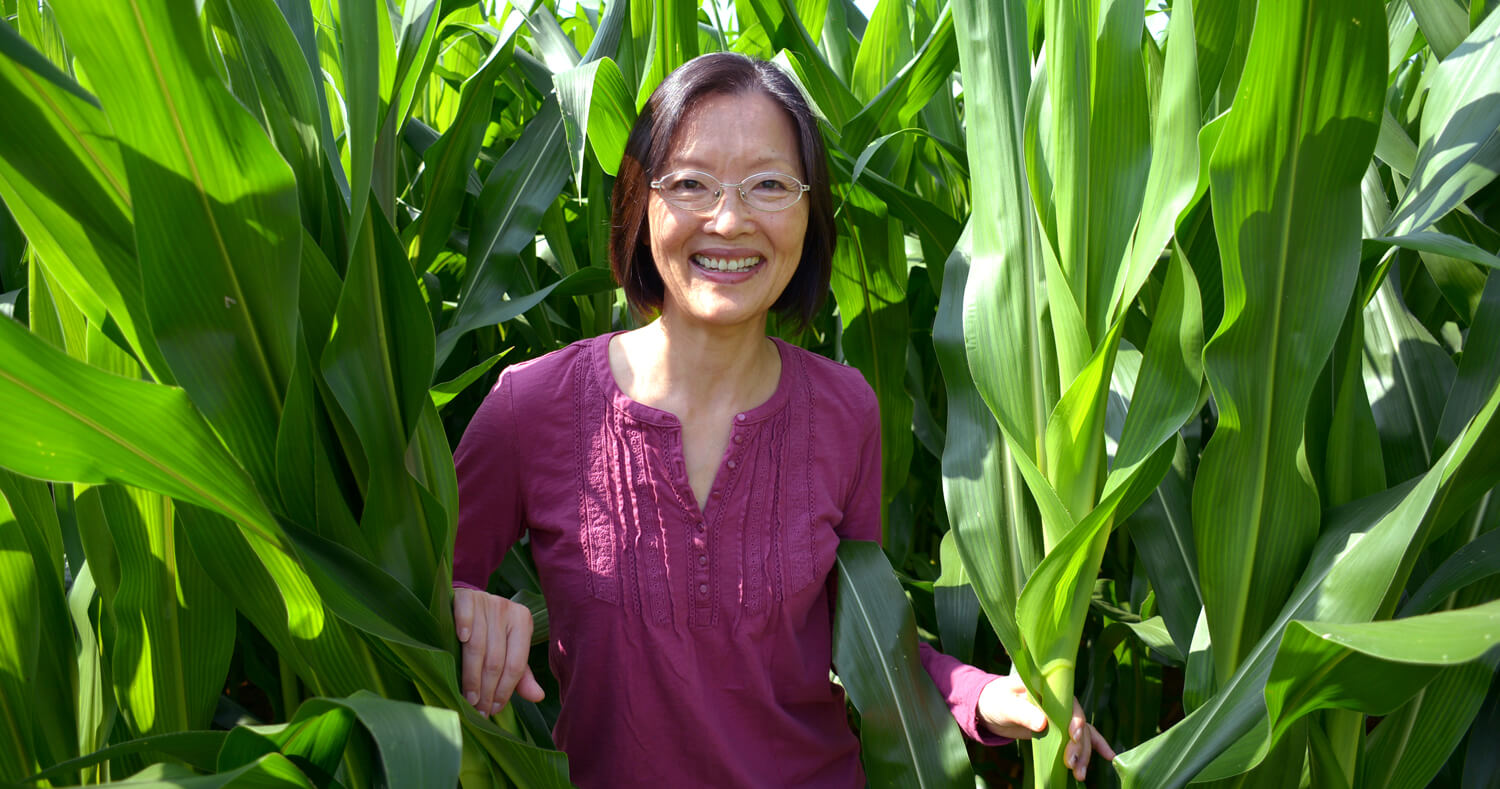 Dr. Zhengxia Dou, Professor of Agricultural Systems
Dr. Zhengxia Dou, Professor of Agricultural Systems
Turning curiosity into action, she conceived of a consumer survey. Margy Lindem, the School’s librarian, suggested expanding the idea into an interdisciplinary project. Dou launched the web-based survey in April with her Penn Vet colleagues Dr. David Galligan, Marilyn M. Simpson Endowed Professor, and Dr. Darko Stefanovski, Associate Professor of Biostatistics, as well as Dr. Paul Rozin, Professor of Psychology, from the School of Arts & Sciences, and Dr. Ariana Chao, Assistant Professor of Nursing at Penn Nursing.
Open for a few weeks, the survey inquired after participants’ grocery shopping habits and experiences, household food security (or lack of), food use — whether they feel the pandemic changed their consumption or wastage of food — as well as family dynamics around meals. Questions were also asked about weight loss and gain.
The survey queried 1,547 U.S. (from 705 zip codes) and 1,732 Chinese (from 30 out of 34 provincial districts) households. The results — The COVID-19 Pandemic Impacting Household Food Dynamics: A CrossNational Comparison of China and the U.S. — were recently published in Frontiers in Sustainable Food Systems (Land, Livelihoods and Food Security section).
Both cohorts reported increased efficiency in use of food, families spending more time cooking and eating together, and more prudent use of food with less waste. Findings also showed food purchasing patterns shifted from frequent trips to the store to dramatic increases in online ordering.
Respondents in the U.S. indicated increased concern about food security and supply post-pandemic breakout, both at the national and household level and especially among people with lower incomes or those who had lost jobs in the crisis.
Surprising Dou, the Chinese cohort showed no change in attitude or confidence after the pandemic breakout. “The Chinese cohort was dominated by young adults and they are not fully independent yet,” she explained. “Many returned home during the pandemic and their parents were the ones focused on food.”
Interestingly enough, for all the talk about the Quarantine 15, “only around two percent of our U.S. respondents reported gaining more than 10 pounds, despite experiencing considerable emotional stress and a general decrease in physical exercise,” said Dou.
Looking ahead, Dou sees hope: “The survey shows many people are more aware now of the preciousness of food. When the world goes back to ‘normal’ I hope people have learned this lesson and keep this awareness to reduce the amount of food waste.”
Tracking Non-COVID-19 Concerns
While consumers are most concerned with COVID-19, other diseases remain a threat to farmers, veterinarians, and agriculture officials. Scientists at Penn Vet and partnering institutions continue to keep tabs on them to ensure farm animals remain healthy.
New Bolton Center’s Pennsylvania Animal Diagnostic Laboratory System (PADLS), a three-part laboratory with locations at Penn State University and the Pennsylvania Department of Agriculture, has worked throughout the pandemic to ensure animal diseases are identified and handled in a timely fashion.
As other labs around the University ceased in-person operations, Dr. Lisa Murphy, Director of PADLS at Penn Vet’s New Bolton Center, and her colleagues established a rotating work schedule to enable PADLS staff to conduct vital diagnostic and surveillance tests while adhering to PPE use and social distancing practices.
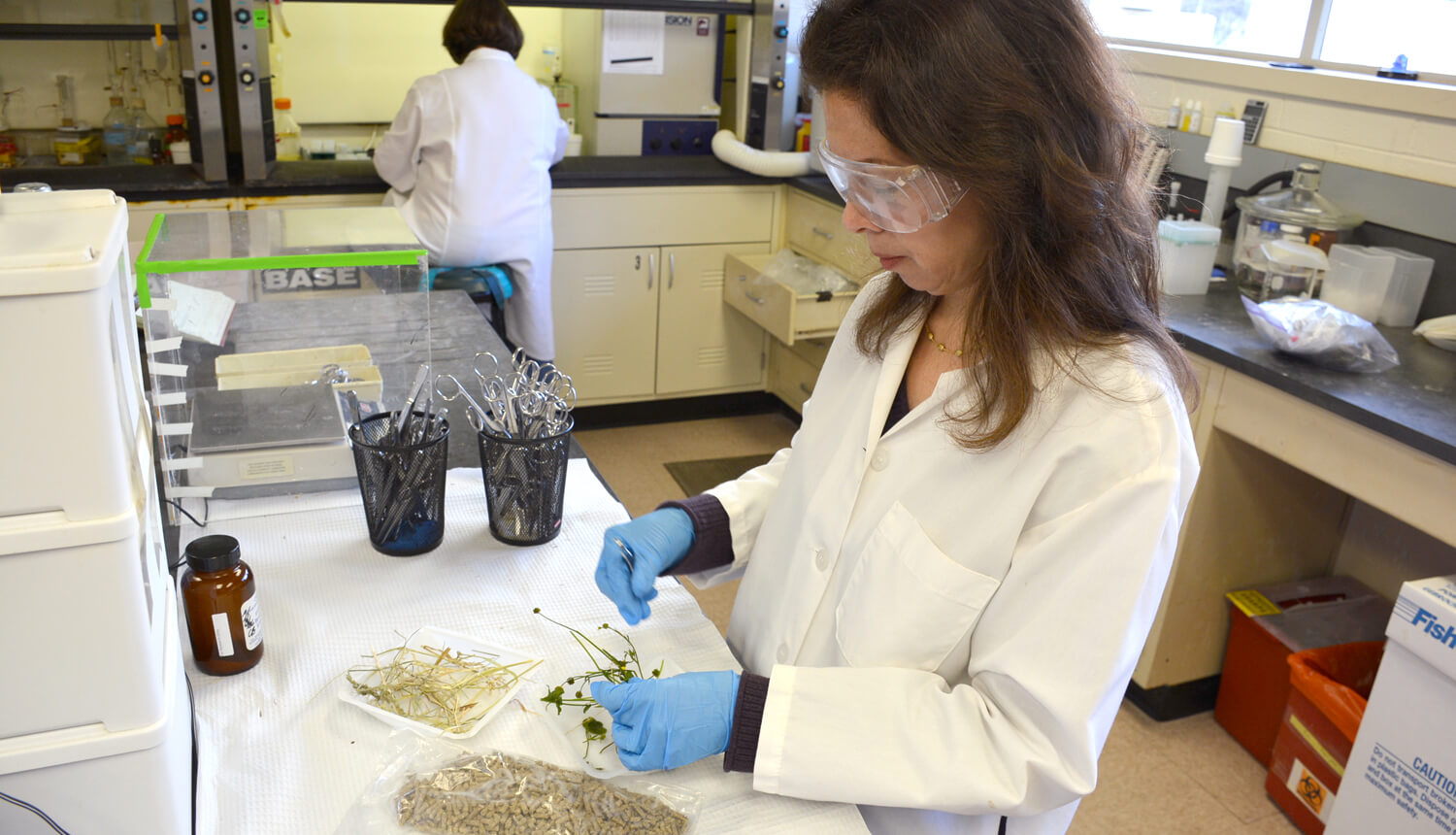 Dr. Lisa Murphy and PADLS have hardly slowed during the pandemic.
Dr. Lisa Murphy and PADLS have hardly slowed during the pandemic.
“We have more than 30 full-time employees and every single one of them has been coming in every week,” said Murphy. “They understand what we do is so critical to our clients, critical to our animals, and to the food system.”
While the caseload of tests stemming from Ryan Hospital and New Bolton Center slowed somewhat when services reduced, external test submissions remained steady. Tests looked at everything from the fallout from a recent outbreak of highly pathogenic avian influenzas that affected turkeys in South Carolina to surveillance for salmonella in eggs.
Murphy said that although many of the diagnostic tests rely on the same products used to diagnose COVID-19, so far there hasn’t been a shortage of supplies.
“There’s been all this talk about the economy and jobs in agriculture being under threat,” Murphy said. “I really feel that the best thing is for us to keep doing what we do best. It’s what we’re trained to do and what we’re here for.”
To communicate some of the diagnoses that PADLS produces, as well as to share self-reported disease outbreaks, New Bolton Center employs another tool to promote early detection and control.
Under the direction of Assistant Professor of Clinical Production Medicine Dr. Meghann Pierdon, Penn Vet’s Pennsylvania Regional Control Program for Swine Disease is one of the largest initiatives in the country intended to track and manage costly diseases that can severely impact pig farms.
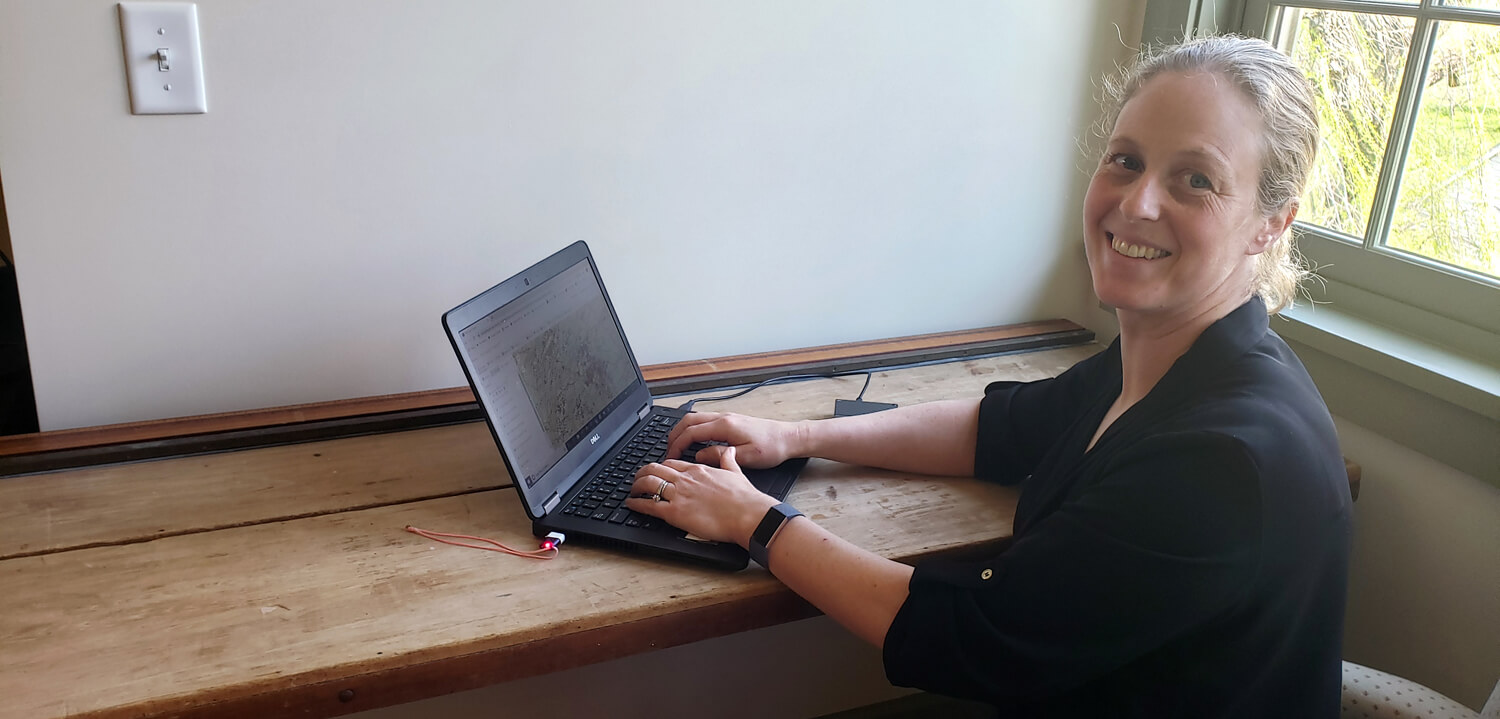 Dr. Meghann Pierdon continues critical surveillance of swine and poultry disease in Pennsylvania from home.
Dr. Meghann Pierdon continues critical surveillance of swine and poultry disease in Pennsylvania from home.
Developed to focus on porcine respiratory and reproductive syndrome, the program also tracked an outbreak of porcine epidemic diarrhea virus from 2013 to 2015. Using geographic information systems technology, Pierdon corresponds with swine and poultry farmers and veterinarians across the state to pinpoint where diseases occur and help them understand when to take measures to prevent disease spread.
Pierdon has also found herself assisting federal and state officials as well as farm operators in thinking about the possible ramifications of COVID-19.
“People are worried about the continuity of being able to process animals through the food supply chain,” she said, noting that farmers are concerned their workforce could suffer from the disease, or are concerned that an oversupply of animals could go to waste with schools and restaurants shut down and not receiving their normal supplies of meat. “Our program helps bring together the appropriate people to talk about keeping things moving in the right direction and what we should be thinking about next.”
Healthy Herds
While the main New Bolton Center hospital is closed to all but emergency and provider-toprovider telehealth consultations, COVID-19 restrictions haven’t significantly altered Penn Vet’s Field Service work with livestock.
The biggest challenge has been staggering schedules to enable social distancing. “On the food animal side, we’re continuing to work as normal,” said Dr. Mike Kristula, Section Chief of the Field Service.
Veterinarians in the Field Service have become de facto public health workers, advising farmers on how to reduce the risk that their own employees would become sick.
“Informally, we’ve been talking with farm workers about the obvious things like social distancing and washing your hands, but also about not going anywhere other than the grocery store, and not having friends over,” said Kristula, who also provides guidance in Spanish, the first language of many farm employees.
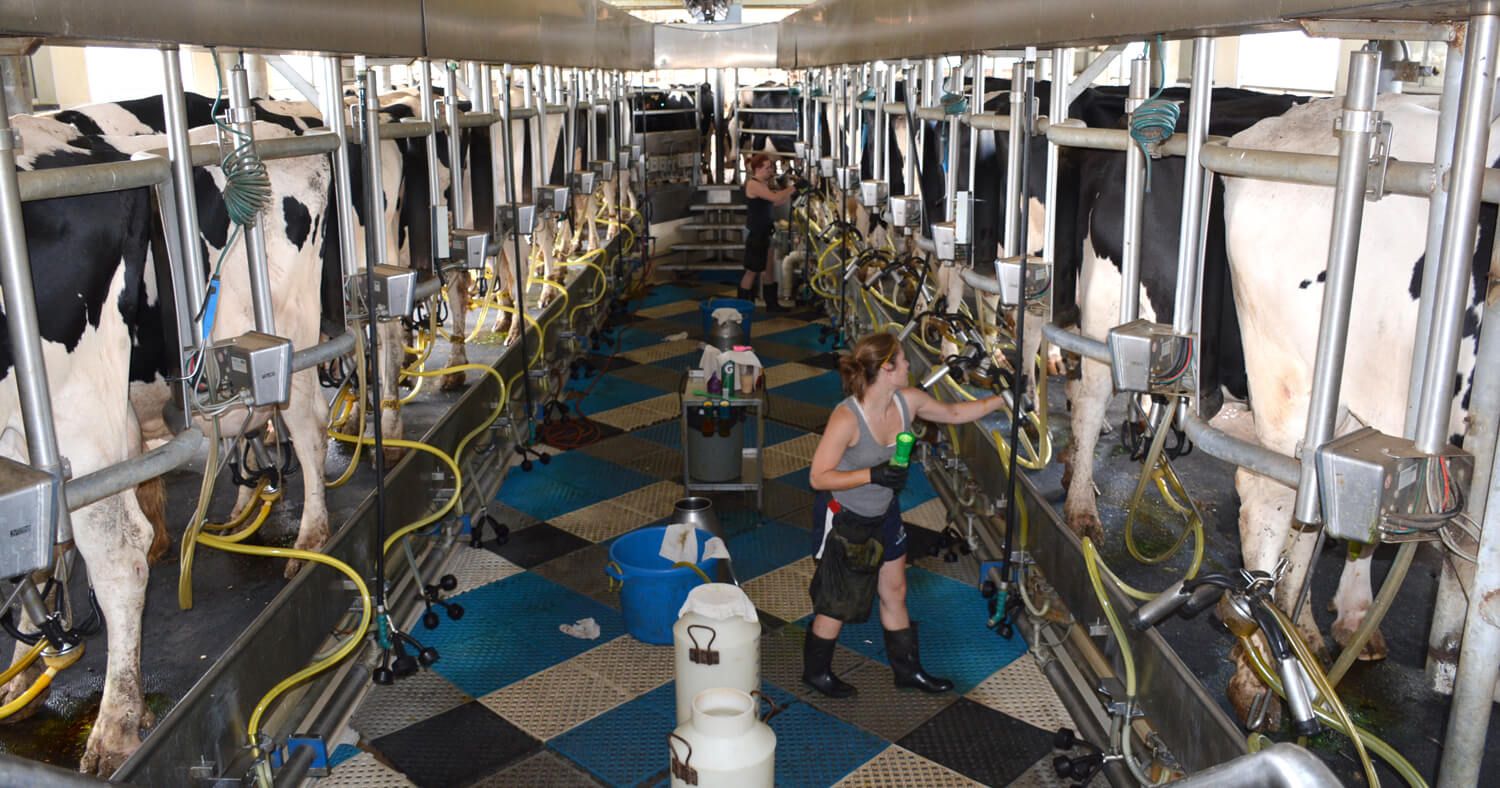 Milking cows, as at Marshak Dairy, can be compatible with social distancing practices.
Milking cows, as at Marshak Dairy, can be compatible with social distancing practices.
Virtual Visits
When in-person visits aren’t possible, the Field Service team used telehealth, led by Dr. Olivia Lorello, Assistant Professor of Clinical Equine Field Service. Virtual visits with referring veterinarians, clients, or herd managers might even include conducting ultrasounds or obtaining radiographs that are read by New Bolton Center’s radiology team.
“We’re trained to go to the animal and do as much as we can hands-on,” said Lorello, “but there is a lot that you can do virtually, especially with the imaging. If you’re getting the same, very high-quality images and still have the specialist on the other end giving expert guidance, that’s a great way to provide care without exposing so many people to one another.”
The Field Service, Swine Outreach teams, and other specialists have utilized telehealth for problems of lameness, umbilical cord hernia or infections, respiratory disease, biosecurity, and herd health assessments in farm animals.
“This is filling an important gap not only in getting the correct diagnoses for the animals to provide treatment going forward,” said Smith, “but also, as an academic institution where we train students, we’re giving our residents the clinical caseload they need to gain experience and get credentialed.”
Promoting Resiliency
This focus on maintaining healthy, skilled practitioners as well as healthy herds traces back to New Bolton Center itself, where hospital operations have continued for emergency cases.
In addition, Althouse, who focuses on swine reproduction to ensure consistent breeding herd results from the start, has used his oversight at New Bolton Center to reallocate staff time. To continue the operations of the campus’s Marshak Dairy, the Swine Teaching and Research Center, and New Bolton Center’s farm operations, staff scheduling and other COVID-19 preventive practices were designed to mitigate the risk of disrupting livestock operations in the event that someone gets sick.
“Our efforts start from the very beginning of the food supply chain, ensuring inputs are consistent and high quality, and go all the way to the farm, ensuring animals are being raised in a manner that promotes good welfare for them, and for those people who raise them,” he said. “We’re fortunate to have a very efficient and productive animal industry in the United States, and we’re proud to play a part in helping it weather this challenge.”